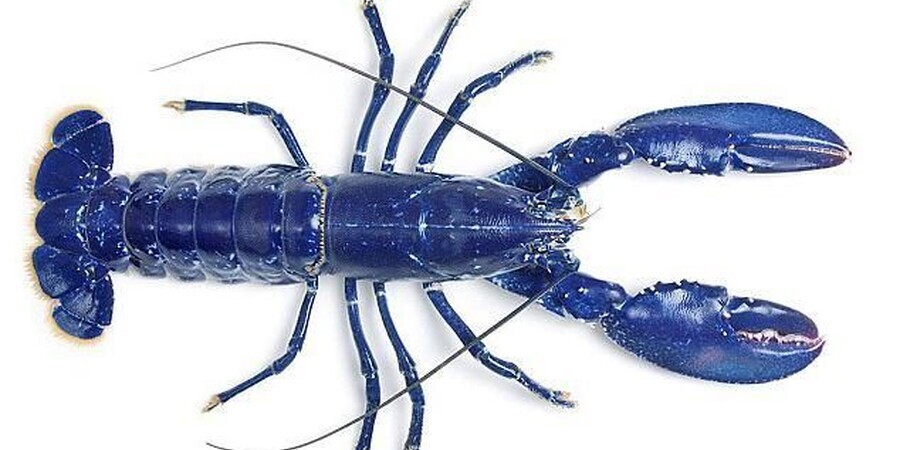Philadelphia, PA - Lobsters are supposed to be red. Well, yes and no. Most live American lobsters have naturally colored an olive green or mottled dark greenish-brown. In rare cases, lobsters come in shades of bright blue, white (albino), yellow, black, and red have been reported from time to time. Perhaps the most unusual colors are the "half-and-half" lobsters with a line straight down their backs where the two colors meet.
Blue Lobsters Are Real & Rare
![]() The primary pigment in a lobster's shell, astaxanthin, is bright red in its free state, but in the lobster's shell, astaxanthin is chemically bound to proteins that change it to a greenish color. When lobsters are cooked, heat breaks down these bonds, freeing the astaxanthin to revert to its typical red color.
The primary pigment in a lobster's shell, astaxanthin, is bright red in its free state, but in the lobster's shell, astaxanthin is chemically bound to proteins that change it to a greenish color. When lobsters are cooked, heat breaks down these bonds, freeing the astaxanthin to revert to its typical red color.
So, How Does A Lobster Turn Bright Blue?
A genetic defect has been found that causes a blue lobster to produce excessive protein. The protein wraps around a small, red carotenoid molecule known as astaxanthin. The two push together, forming a blue complex called crustacyanin, giving the lobster shell a bright blue color. About one in a million lobsters are blue but turn red like the other lobsters when cooked.
It has been suggested that more than 'one in a million lobsters born are blue, but many do not survive because their bright blue shell brings too much attention to themselves, making them a prime target for predators. Scientists also believe blue lobsters tend to be more aggressive than their regular-colored counterparts. Since they don't easily blend in, they have adapted and become more aggressive to protect themselves.
The blue lobster is another Mother Nature gift that most people never see. Many professional lobstermen go through their whole lobstering career without catching or even seeing a blue lobster. Those who do have the privilege of witnessing one are amazed and excited as it is seen as a once-in-a-lifetime event, and they feel a sense of awe when they experience seeing the excellent blue lobster for the first time. Those caught are generally not eaten but rather given to aquariums and educational institutions and kept on display in tanks for others to admire.
Taxonomy of Homarus americanus:
Kingdom: Animalia
Phylum: Arthropoda
Class: Crustacea
Order: Decapoda
Suborder: Macrura reptantia
Family: Nephrodidae
Genus: Homarus
Species: americanus


